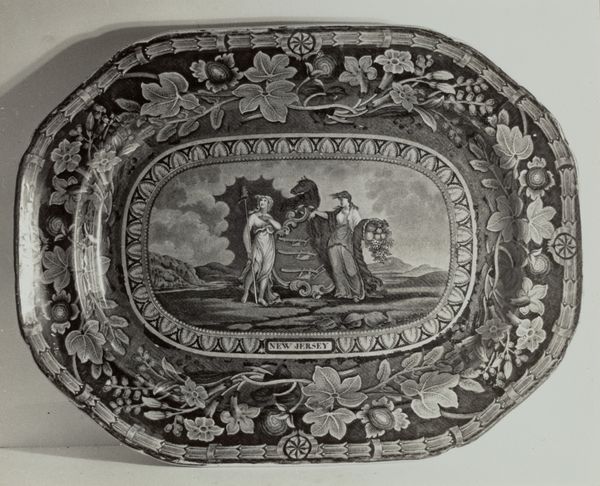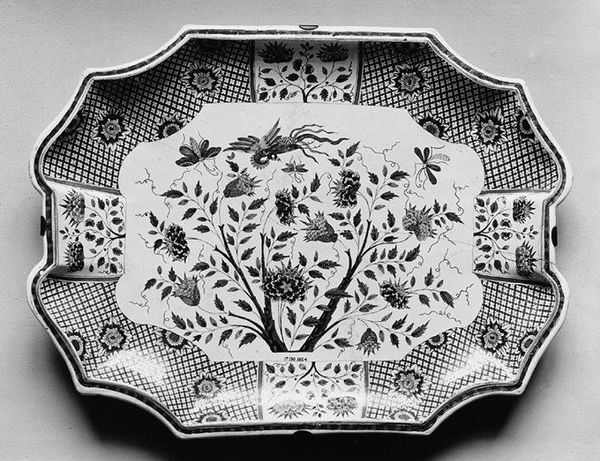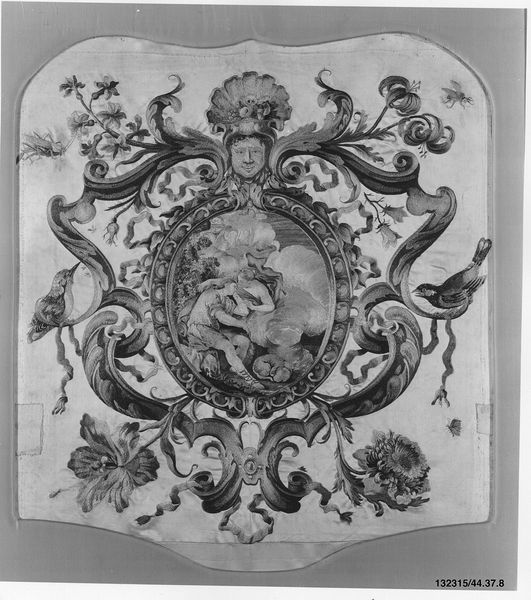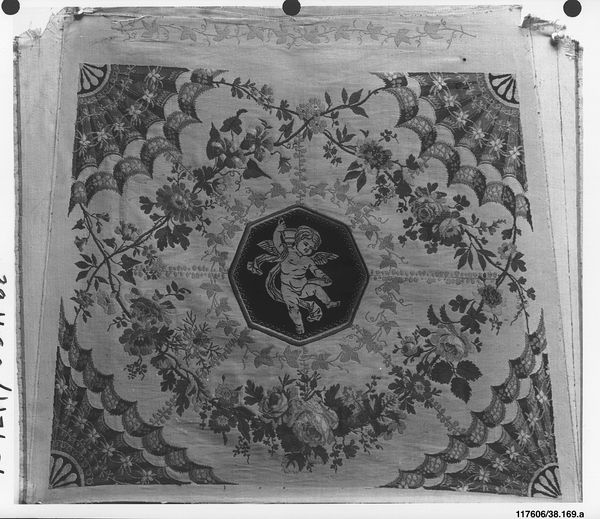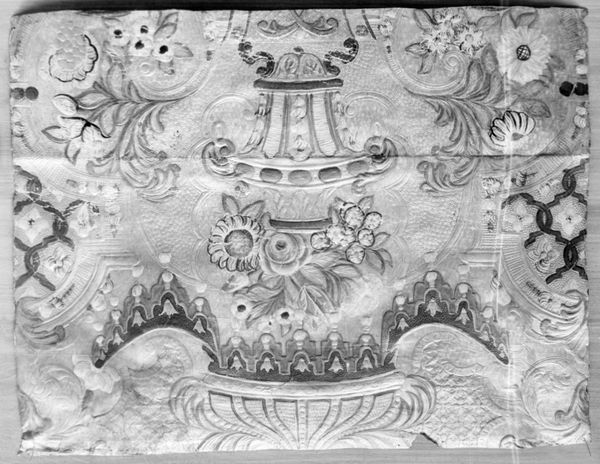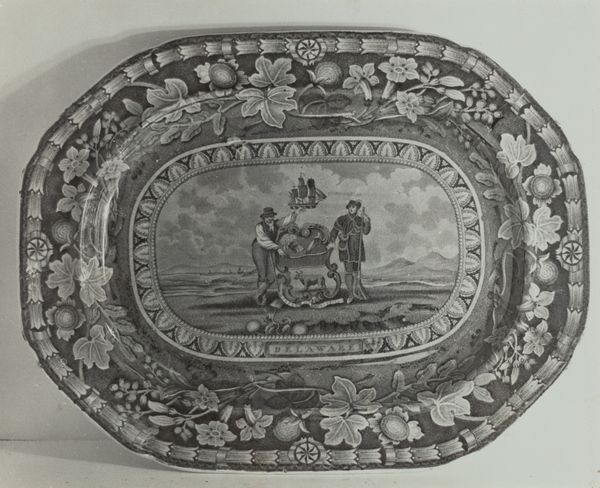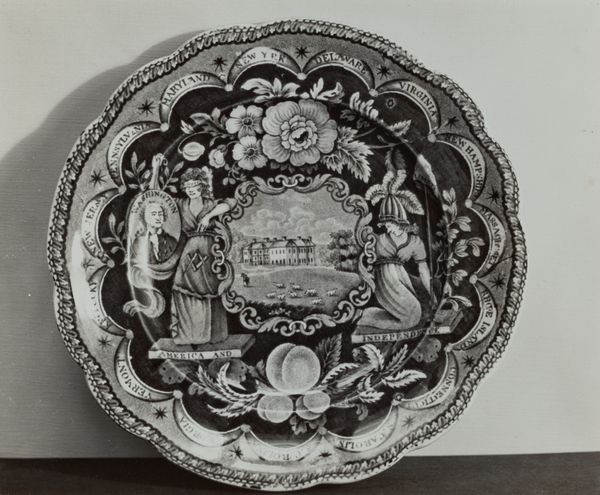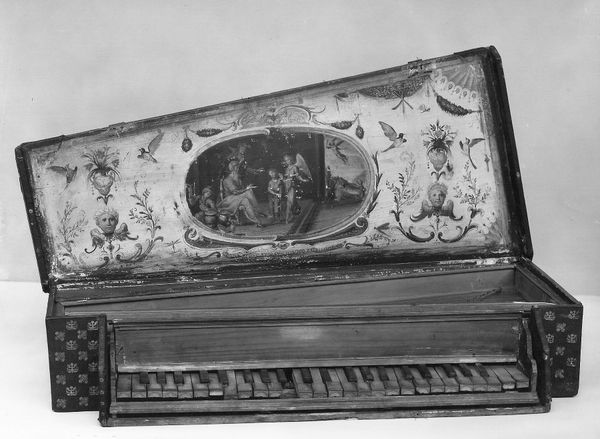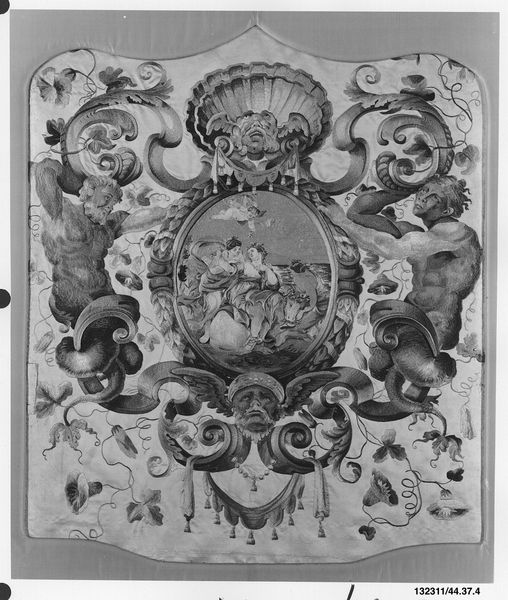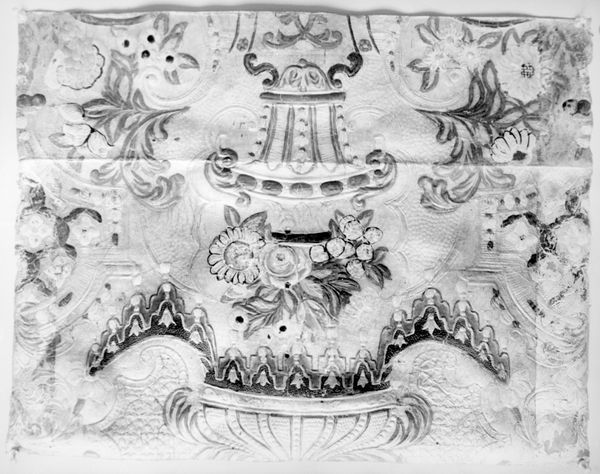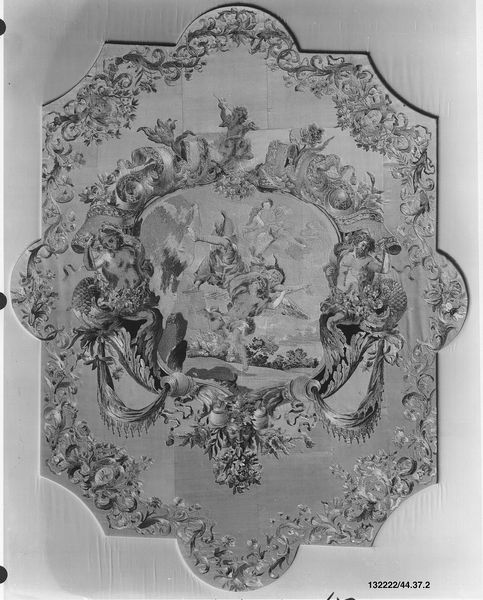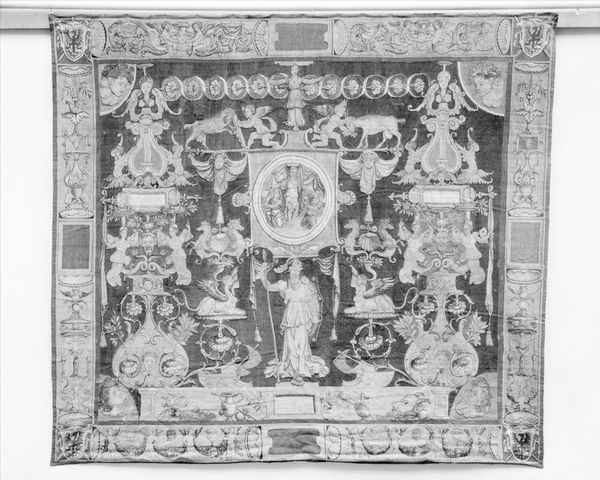
metal, relief, sculpture
#
face
#
metal
#
sculpture
#
relief
#
bird
#
figuration
#
sculpting
#
sculpture
#
history-painting
#
decorative-art
#
rococo
Dimensions: 2 × 2 7/8 in. (5.1 × 7.3 cm)
Copyright: Public Domain
Curator: What strikes me immediately is the exuberance of it all, this almost overwhelming sense of abundance and festivity. It’s just so…Rococo. Editor: Absolutely. And, well, it *is* Rococo! We're looking at a metal Plaque, dating from around 1725 to 1735, attributed to the Workshop of Charles Fromery. You can find this exuberant object right here at the Metropolitan Museum of Art. It's difficult not to smile in front of this octagonal form. Curator: I agree, although the material is metal the details gives me the impression of seeing soft decorative elements more than rigid details. In a way, it's like a metal confection! All those cherubic faces, the sculpted birds nestled among curling vines, and the figures at the center…they all come together almost as in a theatrical production, full of movement, gestures, and narrative. What would you say is the process used in its realization? Editor: Fromery’s workshop was renown for a certain type of decorative art made of metal reliefs. He mastered a peculiar method involving first creating a model of what the sculpture was supposed to be with wax and only then casting bronze. Looking closely at this piece the method’s finesse can be appreciated at the center with the human figures that resemble gods and the architectural elements, and along the perimeter with natural figures such as bird that creates an overall sophisticated, exuberant pattern. It almost appears as if he mastered the serial reproducibility of sculpture, each object meticulously reproducing forms and content from his originals. Curator: It is certainly meant to impress with both its materiality and the mastery of the artisan’s hands who made this possible, it must have meant something in those circles. Considering it probably adorned some noble's residence as part of a set of decorations. I imagine it sparking conversations about history and the fine arts. Editor: Definitely. It is, indeed, a tangible demonstration of wealth and sophisticated knowledge and taste for decorative art from the commissioner and those who work with materials, that includes the patron as well as the artist or artisan working on it. Its very existence depends on a whole system. Curator: In its original context, you could find this plaque sparking debate and also inciting curiosity for this particular style which makes it all very fun to imagine. Editor: It gives us a rich insight into the labor and industrial structure surrounding metal objects from that specific period of time, reflecting tastes and social structure of its patron at a certain point in time. Curator: Well, regardless, it brings a sense of liveliness into our spaces, just like it must have done back then. Editor: Precisely. And hopefully sparks interest in its complex mode of creation and purpose too.
Comments
No comments
Be the first to comment and join the conversation on the ultimate creative platform.
